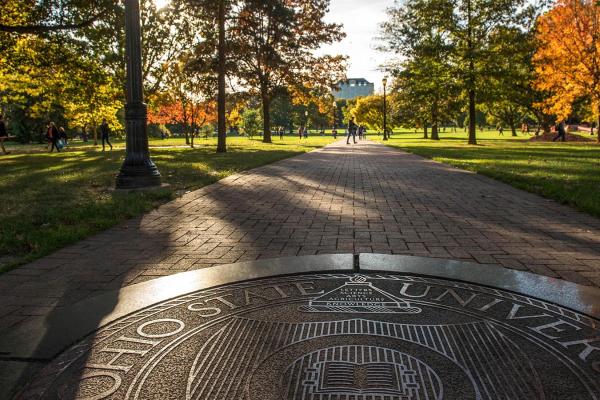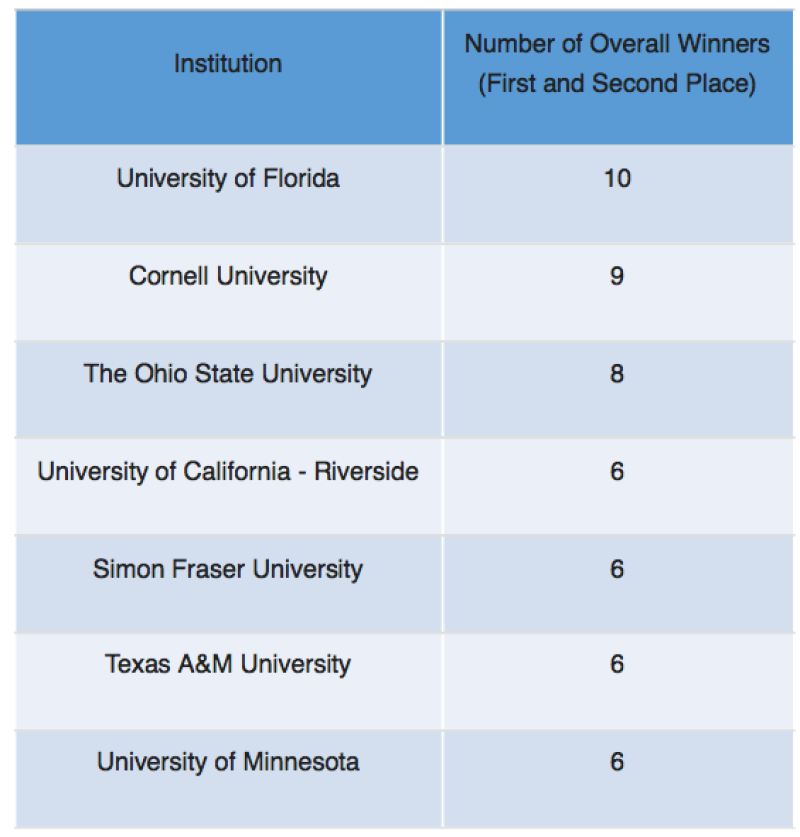Why do scientists go to conferences? A highlight of the 2018 National Entomological Society of America meeting in Vancouver, Canada.

In November of 2018, I was fortunate to attend the Entomological Society of America (ESA) conference in beautiful Vancouver, Canada. Several of the other entomology students, faculty and staff also attended, so I asked a few people why they go to conferences and what they gain from going. Their responses can be summed up in the following points:
1) Presenting our research in a competitive setting. Most of the graduate students that attend ESA present their research in the student competitions, either as a 10-minute presentation or on a poster. You can always tell when it’s student competition day, because the hallways are filled with students that are practicing their talk for the hundredth time (myself included) and trying to de-stress. For these competitions, we are competing against other students at the same level (M.S. or Ph.D.) and whose research is in a similar field. We are each ‘scored’ on various criteria, such as how well we keep to our allotted time, the logical flow of the presentation and our interpretation and significance of our results. First and second place winners are chosen for each session, and the winners are recognized at an awards ceremony. Graduate students from The Ohio State University did very well this year, securing 8 first or second place prizes, and placing 3rd overall for student awards (Table 1.) As students, we love participating in the annual competition, which is a great way to boost our CVs. We also enjoy the winnings that accompany a prize!

Table 1. Number of students receiving a first or second place award at each institution. Table is from https://www.entsoc.org/entomology2018.
2) Learn about new research and scientific advancements. Nearly everyone in attendance downloads the conference app and then fills their schedules with talks and poster sessions with interesting and relevant topics. Sometimes we attend presentations because the topics cover emerging issues or have genuinely piqued our interest, while we attend other presentations because they are relevant to our own research. For example, Dr. Megan Meuti is a faculty member and mosquito physiologist at OSU. While at ESA, she learned “that the malaria vector, Anopheles coluzzi, persists during the dry season in the Sahel region of Africa. This demonstrates that female mosquitoes are able to survive for over 7 months, and suggests that this mosquito enters a summer diapause. The work was presented by Roy Faiman and Tovi Lehmann from NIH, and could have implications for mosquito control.”
3) Meet with scientists who share similar research interests. Nearly everyone that I spoke with mentioned that one of the biggest benefits of attending a scientific conference was to network and discuss ideas and future projects with collaborators. For example, Adrian Pekarcik, an Entomology Ph.D. student, said "My study organism, the Asiatic garden beetle, recently emerged as a pest of field crops in Ohio, Indiana and Michigan, but has historically been a pest of turfgrasses. During the meeting I had the opportunity to meet several leading researchers in turfgrass entomology who offered advice for my research based on their own personal experiences."
4) Professional networking + career advice. Conferences afford many opportunities to help students find the next step in our career. Students can check out the job board for job postings related to graduate, post-doc or faculty openings, or stroll through the exhibit hall to talk to industry representatives and learn about their opportunities. We can also attend informational “lunch and learns”, such as “Avoiding pitfalls in early graduate school and preparing for your career,” or “Nontraditional careers in entomology.” One topic discussed at the nontraditional careers lunch and learn was how to tailor your CV to apply for a USDA position.
5) Seeing the sights! Attending the national ESA meetings as a graduate student has taken me all over the country, from north (Minneapolis, MN) to south (Austin, TX) and east (Orlando, FL) to west (Portland, OR), as well as a few places in between (Knoxville, TN)! It’s always nice to explore the city we are visiting, whether that’s taking a little time away from the conference to eat a donut at Voodoo Donuts (Portland), or taking an extra day to see the sights (Figure 1). ESA 2018 was in beautiful Vancouver, Canada. A few of us OSU graduate students stayed an extra day to see some Canadian attractions including Stanley Park, Capilano Suspension Bridge and the salmon hatchery. We ate poutine and salmon, walked around the city, and had a great visit!
6) Catching up with old friends! Everyone enjoys catching up with old graduate school friends or colleagues over food and beers! Maintaining these relationships is one of the most rewarding aspects of attending a conference.
Figure 1. Seeing the sights! A) Voodoo donuts in Portland, OR. B-D) Vancouver, Canada. B) Graduate students at the Vancouver Convention Center. (Left- right: Emily Justus, Priyanka Mittapelly, Ashley Yates-Stewart). C) View from the Vancouver Convention Center. D) Graduate students at the Capilano Suspension Bridge. (Left-right: Stephanie Murray, Priyanka Mittapelly, Ashley Yates-Stewart).
Written by TPS Fellow Ashley Yates-Stewart
